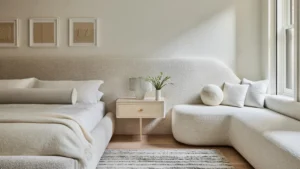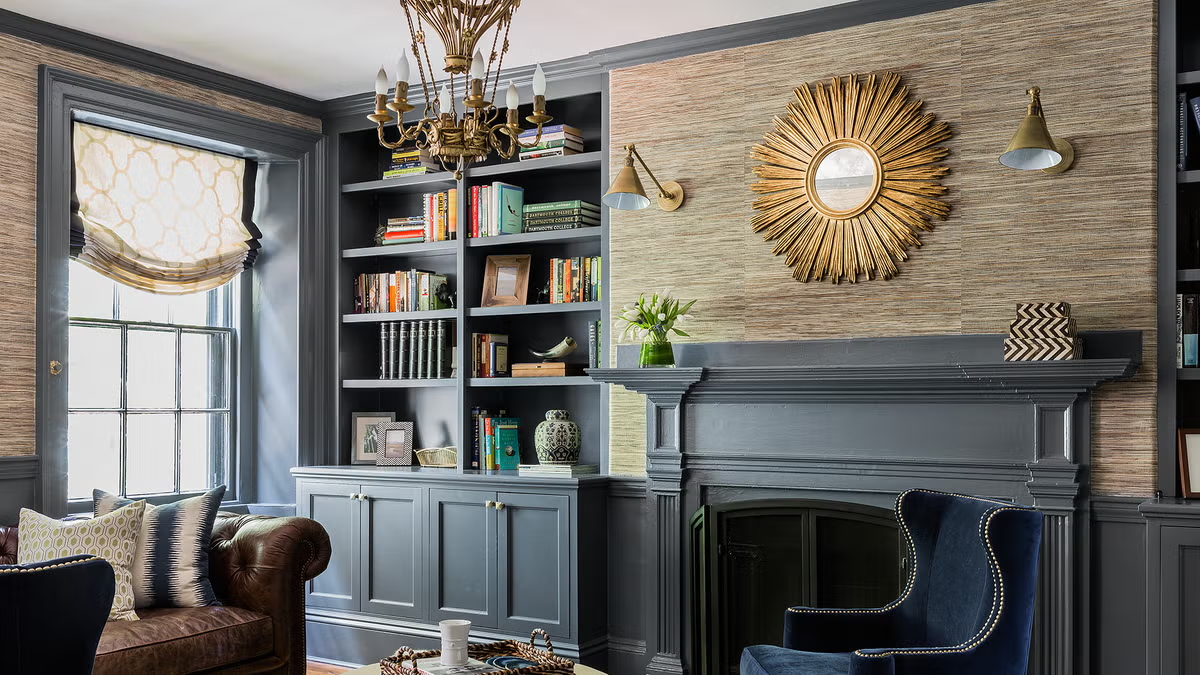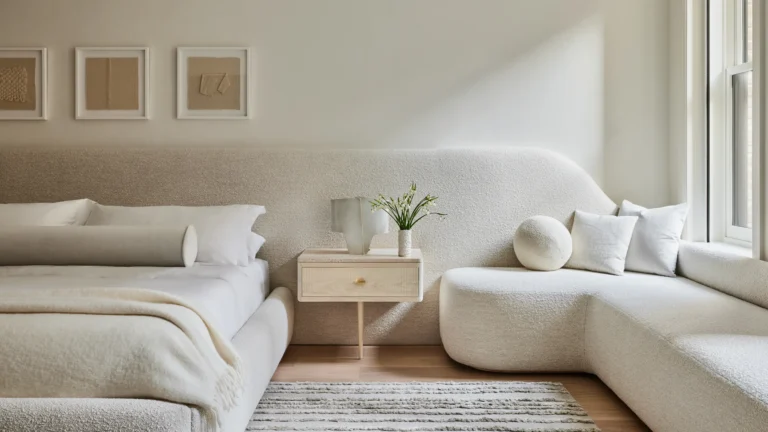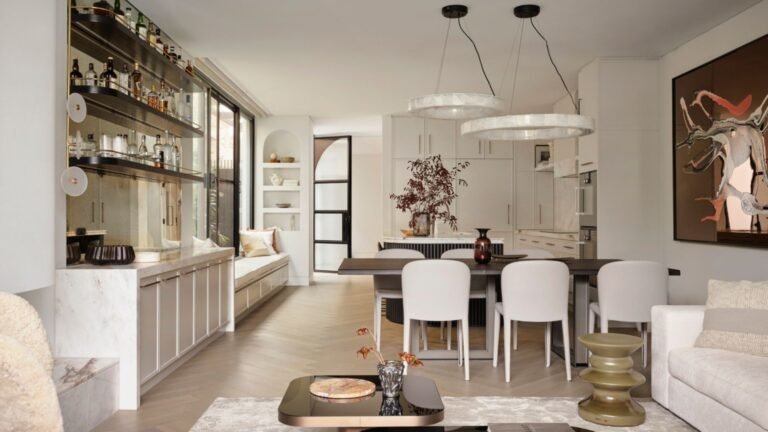Dark colors have long been a polarizing choice in interior design. While some shy away from them, fearing they’ll make spaces feel small or oppressive, others embrace their ability to create drama, sophistication, and warmth. When used thoughtfully, dark colors can transform a room into a striking, cozy, or luxurious haven. This article explores the art and science of decorating with dark colors, offering practical tips, design principles, and inspiration to help you master this bold aesthetic. Whether you’re considering a single accent wall or an entire room drenched in deep hues, this guide will equip you with the knowledge to create a stunning and balanced space.
Why Choose Dark Colors?
Dark colors—think deep charcoals, rich navies, inky blacks, and moody plums—bring a unique energy to interiors. Unlike lighter shades, which can feel airy and neutral, dark tones command attention and evoke emotion. Here are some reasons why dark colors are worth considering:
- Sophistication and Elegance: Dark colors exude luxury. A deep emerald green or a velvety black can make a room feel like a high-end boutique hotel or a chic urban loft.
- Cozy Ambiance: Dark hues create a sense of intimacy, making large or open spaces feel more inviting. They’re perfect for creating a cocoon-like atmosphere in bedrooms or living rooms.
- Versatility: Contrary to popular belief, dark colors work in both small and large spaces. In small rooms, they can add depth, while in larger spaces, they anchor the design.
- Timeless Appeal: While trends come and go, dark colors have a timeless quality. They’re less likely to feel dated compared to fleeting pastel or neon trends.
- Highlighting Features: Dark colors can emphasize architectural details, artwork, or furniture, making them stand out in a way that lighter backgrounds often can’t.
However, decorating with dark colors requires careful planning to avoid common pitfalls, such as making a room feel too heavy or unbalanced. Let’s dive into the key principles and strategies for using dark colors effectively.
Choosing the Right Dark Colors
Not all dark colors are created equal, and selecting the right shade is critical to achieving your desired effect. Here are some considerations when choosing dark hues:
Understand Undertones
Dark colors often have complex undertones that affect how they appear in different lighting. For example:
- Navy Blue: Can have green or purple undertones, which influence whether it feels cool or warm.
- Charcoal Gray: May lean blue (cool) or brown (warm), impacting the room’s mood.
- Deep Green: Emeralds with blue undertones feel modern, while olive-toned greens feel earthy.
Test paint samples in your space under both natural and artificial light to ensure the undertone complements your design vision.
Consider the Mood
Different dark colors evoke different emotions:
- Black: Timeless, dramatic, and bold. Perfect for modern or minimalist spaces.
- Navy Blue: Calming yet sophisticated, ideal for bedrooms or offices.
- Deep Green: Natural and grounding, great for living rooms or dining areas.
- Plum or Burgundy: Rich and luxurious, suited for formal spaces or accent walls.
- Charcoal Gray: Neutral and versatile, a safe choice for those new to dark colors.
Choose a color that aligns with the emotional tone you want to set in the room.
Test in Context
Before committing to a dark color, purchase sample pots and paint large swatches (at least 2×2 feet) on your walls. Live with the samples for a few days to see how they look at different times of day. Lighting can dramatically alter how a dark color appears, so don’t skip this step.
Balancing Dark Colors in Your Space
The key to decorating with dark colors is balance. Without it, a room can feel overwhelming or cave-like. Here are some strategies to create harmony:
1. Use the 60-30-10 Rule
This classic design principle helps balance colors in a room:
- 60% Dominant Color: Use a dark color as the main hue for walls or large furniture pieces.
- 30% Secondary Color: Introduce a lighter or complementary color through furniture, rugs, or curtains.
- 10% Accent Color: Add pops of color through accessories like pillows, artwork, or decor items.
For example, a room with charcoal gray walls (60%) could feature a cream-colored sofa (30%) and gold or mustard accents (10%).
2. Incorporate Light Elements
To prevent a dark room from feeling heavy, incorporate lighter elements to create contrast:
- White or Neutral Trim: White baseboards, crown molding, or window frames can frame dark walls and add brightness.
- Light Furniture: Pair dark walls with lighter furniture, such as beige, cream, or light wood tones.
- Metallics: Gold, brass, or silver accents (in light fixtures, mirrors, or hardware) reflect light and add glamour.
- Mirrors: Strategically placed mirrors bounce light around the room, making it feel larger and brighter.
3. Play with Texture
Texture is crucial when working with dark colors, as it adds depth and prevents the space from feeling flat. Consider:
- Matte vs. Glossy Finishes: Matte dark walls feel modern and understated, while glossy finishes add drama and reflect light.
- Natural Materials: Wood, leather, linen, or wool introduce warmth and tactile interest.
- Patterned Fabrics: Use patterned rugs, curtains, or throw pillows to break up large expanses of dark color.
For example, a navy blue room with a jute rug, linen curtains, and a leather armchair feels rich and inviting rather than monotonous.
4. Layer Lighting
Lighting is critical when decorating with dark colors, as they absorb light and can make a space feel dim if not properly illuminated. Use a combination of lighting types:
- Ambient Lighting: Ceiling fixtures or chandeliers provide overall illumination.
- Task Lighting: Table lamps or reading lights focus light where needed.
- Accent Lighting: Wall sconces or picture lights highlight artwork or architectural features.
Opt for warm-toned bulbs (2700K–3000K) to create a cozy atmosphere, and consider dimmable lights for flexibility.
Room-by-Room Guide to Dark Colors
Dark colors can work in virtually any room, but their application varies depending on the space’s function. Here’s how to use them effectively in different areas of your home:
Living Room
The living room is a great place to experiment with dark colors, as it’s a space for relaxation and socializing. Try:
- Dark Accent Wall: Paint one wall in a deep hue like forest green or charcoal to create a focal point behind a sofa or fireplace.
- Cozy Textures: Pair dark walls with plush fabrics like velvet or chenille for a warm, inviting vibe.
- Bright Accents: Add pops of color through throw pillows, rugs, or artwork to keep the space lively.
Bedroom
Dark colors can make bedrooms feel serene and restful, perfect for unwinding. Consider:
- Full Room Color: Paint all walls in a soothing navy or deep plum for a cocoon-like effect.
- Light Bedding: Use white, cream, or pastel bedding to contrast with dark walls.
- Soft Lighting: Incorporate bedside lamps or string lights for a cozy ambiance.
Dining Room
Dark colors create a dramatic backdrop for entertaining in dining rooms. Try:
- Rich Hues: Deep burgundy or hunter green walls set an elegant tone for dinner parties.
- Metallic Accents: Gold or silver tableware and chandeliers elevate the luxurious feel.
- Statement Furniture: A light wood or glass dining table contrasts beautifully with dark walls.
Bathroom
Small bathrooms can handle dark colors surprisingly well, as they create a spa-like atmosphere. Consider:
- Bold Tiles: Use dark subway tiles or matte black fixtures for a modern look.
- White Accents: White towels, sinks, or vanities balance the darkness.
- Mirrors and Lighting: A large mirror and ample lighting prevent the space from feeling cramped.
Kitchen
Dark colors in kitchens create a sleek, contemporary vibe. Try:
- Dark Cabinets: Black or navy cabinetry paired with light countertops creates a striking contrast.
- Open Shelving: Display white or colorful dishes to break up the dark palette.
- Natural Light: Ensure ample natural light to keep the kitchen functional and inviting.
Common Mistakes to Avoid
While dark colors are versatile, there are pitfalls to watch out for:
- Ignoring Lighting: Dark colors absorb light, so inadequate lighting can make a room feel gloomy. Always test your lighting plan before committing.
- Overdoing It: Using too many dark colors without lighter accents can make a space feel heavy. Balance is key.
- Skipping Samples: Dark colors look different in every space. Always test paint samples to avoid surprises.
- Neglecting Scale: In small rooms, avoid overly dark furniture with dark walls, as it can overwhelm the space. Opt for lighter furnishings instead.
- Forgetting Maintenance: Dark walls show dust, smudges, and scratches more easily. Choose durable, washable paint finishes like eggshell or satin.
Inspiration from Design Trends
Dark colors are having a moment in interior design, with several trends showcasing their versatility:
- Moody Maximalism: Pair dark walls with bold patterns, vibrant artwork, and eclectic furniture for a bohemian vibe.
- Modern Minimalism: Use black or charcoal in clean, simple spaces with sleek furniture and minimal decor.
- Biophilic Design: Combine deep greens with natural materials like wood and stone to bring the outdoors in.
- Art Deco Revival: Deep jewel tones like sapphire or amethyst paired with gold accents create a glamorous, vintage-inspired look.
Practical Tips for Getting Started
If you’re new to decorating with dark colors, start small to build confidence:
- Begin with an Accent Wall: Paint one wall in a bold color to test the waters.
- Use Dark Accessories: Incorporate dark throw pillows, rugs, or curtains before committing to paint.
- Experiment with Furniture: A dark sofa or dining table can introduce the aesthetic without overwhelming the space.
- Consult a Professional: If you’re unsure, work with an interior designer to create a cohesive plan.
Maintaining Dark-Colored Spaces
Dark walls and furnishings require a bit more care to keep them looking pristine:
- Regular Dusting: Dust is more visible on dark surfaces, so dust furniture and walls weekly.
- Spot Cleaning: Use a damp cloth to clean smudges or marks on dark walls. Opt for washable paint finishes for easier maintenance.
- Protect Floors: Dark rugs or flooring can show pet hair or lint, so vacuum regularly and consider a robot vacuum for convenience.
Conclusion
Decorating with dark colors is an art form that, when done right, can elevate your home to new heights of style and comfort. By understanding undertones, balancing light and dark elements, and layering textures and lighting, you can create spaces that are both striking and functional. Whether you’re drawn to the drama of black, the serenity of navy, or the richness of deep green, dark colors offer endless possibilities for creating a home that reflects your personality and taste. So, don’t shy away from the dark side—embrace it, and let your creativity shine.








